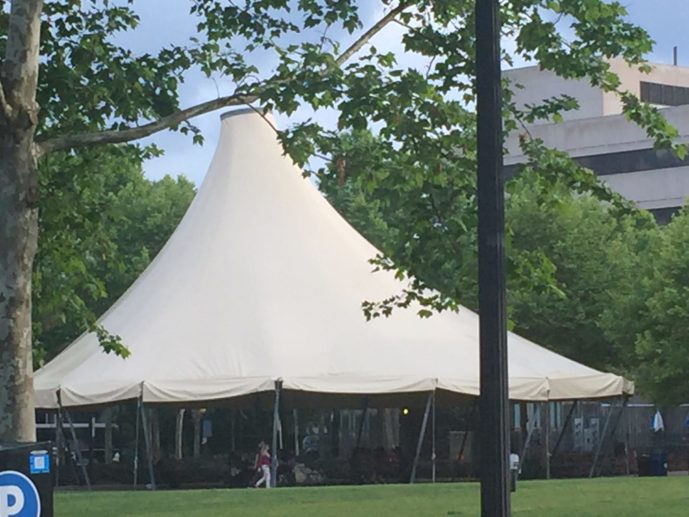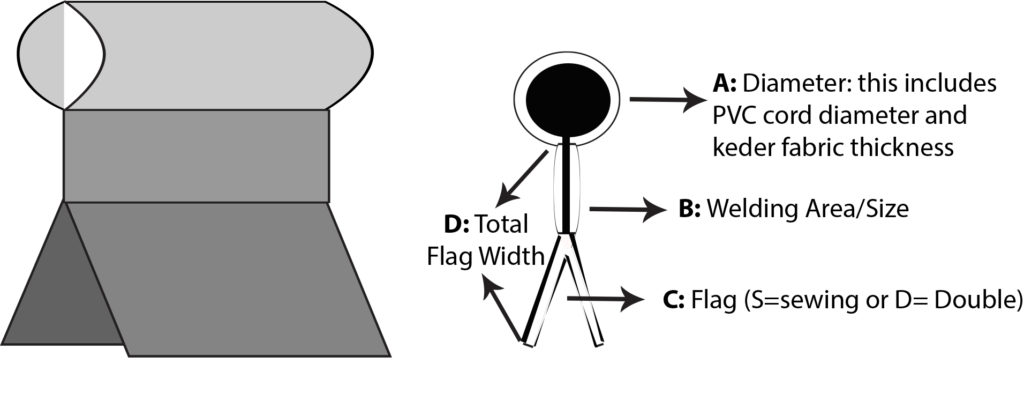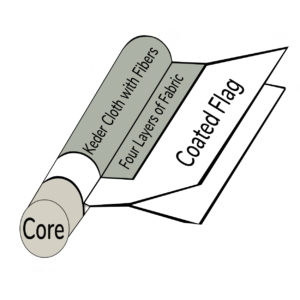Keder
What is Keder?
Keder is a rope-edge product that connects fabric panels to a frame, by sliding it into an aluminum extrusion rail. Compromising of two components: a PVC extrusion core, and fabric. The fibers of the fabric are exposed on the outside, making the cord easier to slide into the frame. Combining the rope edge to the fabric panel, making keder easier to install than other rope edges.
Keder rope is versatile posing into a variety of different applications. Lightweight carries a variety of products in our Kedermaker and Eurokeder catalogs. Below are examples keder is integrated into our infrastructure.

Tent Structures
Keder acts as a strong reliable connection between the fabric panels and the railing/frames systems in permenant or temporary tensile and tent structures. Lightweight supplies materials for repairing fabric panels in tent structures.

Banner Advertising
Capable of acting as a support system for various advertising banners and signs. Durability and easier installation make our keder ideal for this type of application.

Awnings and Sunshades
Keder and extrusions rails systems secure awning fabric for smaller-scale outdoor spaces producing increased UV resistance from the sun.

Marine
Applying keder as boat covers and sails offers many benefits including a quality of life improvments. Our keder does not compromise between its flexibility and durability to any marine application.
Which type of Keder is best for my project?
Style
Keder style separates into three forms based on their attachment method: sewing, single-flag weldable, and double-flag keder.
Sewing
Sewing flag is the simplest of the three to attach. Welding the flag shut, making it easy to sew to a fabric panel. A great choice for signs and banners, but also, for larger applications like awnings and canopies.
However most sewing thread styles not designed for UV-resistance and not a suitable method for durability, especially against sunlight exposure, is an attribute in your consideration. Special PTFE thread can offer long-term durability.
Single Flag Keder
A single flag attaches with any welding method, including hot air welding, wedge welding, and radiofrequency welding (RF welding for short). RF welding creates a stronger bond and improves water tightness and UV resistance. The single flag is not appropriate for larger panels with high tensile loads because of the welding occurring on one side, the weld becomes a single point of failure. This is why single flag uses wider 20mm welds. Lightweight distributes all our keder already RF welded.
Double Flag Keder
Double-flag is the strongest and most durable, and only welds properly using a radio-frequency (RF) welder, which can be cost-prohibitive. The weld is no longer a point of failure like single flag because both sides of the flag welding to the panel make the strength of the fabric its only limitation.
Weave Styles
The weave style refers to the way the keder fabric is woven. There are two common weaves: plain weave and the panama style weave.
Plain Weave
Plain weave is the most basic form of weaving. Each weft yarn crosses the fill yarns up and under. The next weft yarn goes over the fill yarn that the previous weft yarn went under and so on.
Panama Weave
Panama weave is a variation, whereby 2 yarns next to each other go up and under, as well in the weft as the fill direction. The Panama weave allows a greater strength of the fabric with the same yarn size storing more yarn per each inch woven
Thread Weight
Fabric strength is measured using either Denier or the Dtex scale. Keder with thicker yarn tends to be stronger, more durable, and slides better, however, it also usually costs more. Lightweight Manufacturing offers three different thread weights: 2000 Denier, 1500 Denier, and 1000 Denier.


